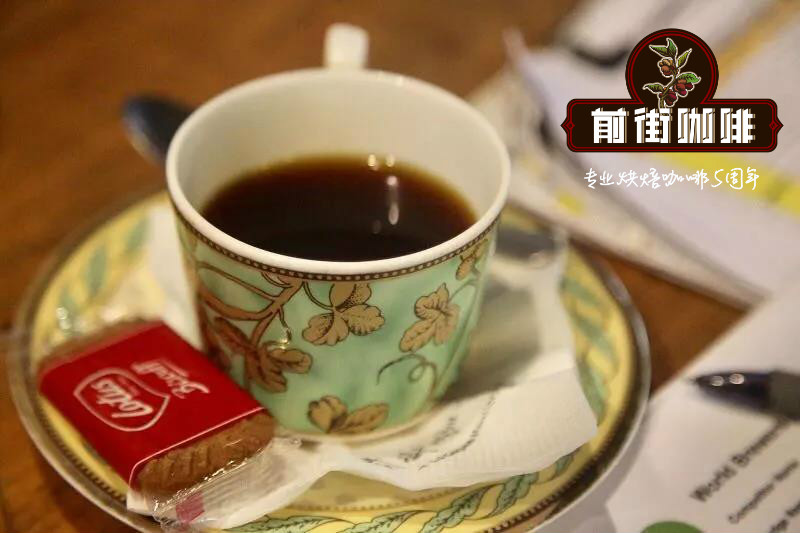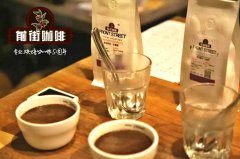Mexican Coffee Story Mexican Coffee Plantation Recommended: Oaxaca

Professional coffee knowledge exchange more coffee bean information please follow the coffee workshop (Wechat official account cafe_style)
There is no way to grow coffee in the latitude and climate of the north, and coffee growing areas are all in the south. 90 per cent of Mexico's coffee comes from four southern provinces, Chiapas (35 per cent), Oaxaca (13 per cent), Puebla (15 per cent) and Veracruz (25 per cent). A total of nearly 500000 people are engaged in coffee cultivation, 70 per cent of whom are small farmers. Unlike Brazil, almost all coffee cultivation and processing rely on manual labor, and many coffees are organically cultivated. Mexico is one of the world's largest exporters of organic coffee, accounting for 60 per cent of global organic coffee production in 2000. Chiapas and Oaxaca, the two coffee provinces, are the poorest and most aboriginal areas in Mexico, with towering forests blocking traffic, different languages and races, and did not extricate the south from hardship after its colonial liberation from Spain.
Coffee arrived in Mexico very late. In the second half of the 18th century, Spanish immigrants brought coffee trees from Cuba and Dominica in the Caribbean, but it did not really grow coffee commercially until the 1790s, when Germans and Italians emigrated from Guatemala and Central and South America to Mexico, and Veracruz first appeared coffee plantations. Mexico has always maintained the tradition of small farmers. The agricultural reform after the Mexican revolution allowed aborigines and farmers to own small plots of agricultural land and be self-sufficient. The 1970s and 1980s were the golden age of Mexican coffee. In 1973, the Mexican National Coffee Institute (INMECAFE) was established to provide technical assistance to small farmers, loans, guaranteed acquisitions, and even in line with the international market. Coffee output increased, and even increased by 900% in some areas, which improved the social development of remote areas to a considerable extent.
Bananas and coffee are probably the most important economic products for other countries in the Caribbean and Central and South America, while Mexico is extremely rich in minerals. In Spanish colonial times, it was precious metals such as gold and silver, and in modern times it was oil. For Mexico, oil, industry and tourism are far more important than coffee. Coffee growers in the south, mostly aborigines, are usually placed last, and it is the futures prices of London and New York that determine coffee prices on the world market. When the price of coffee is good, profits are monopolized by large multinational exporters, and when the price is not good, it is the farmers who suffer.
Mexico's best coffee producer is Chiapas in the south of the country, where caffeine varieties include Tapanchula and Huixtla. The Oaxaca region also produces high-quality coffee beans, of which the Pluma Coixtepec coffee beans, which are grown in natural conditions, are the best. The Oaxaca region also produces Altura Orisaba (Altura Orizaba) coffee and Altura Vatusco (Altura Huatusco) coffee. The Altura Coata Paike (Altura Coatapec) region produces Veracruz (Veracruz) coffee. The best giant coffee beans in Mexico are Liquidambar MS coffee beans.
OAXACA
Most farmers in the OAXACA producing area own less than 2 hectares (4.4 acres) of land in the area and have several large cooperatives. There are also some larger estates, although some have developed diversified tourism.
Altitude: 900-1700m
Harvest: December to March
Variety: bourbon, Typica,Caturra Maragogype
Qianjie coffee: Guangzhou bakery, the store is small but a variety of beans, you can find a variety of unknown beans, but also provide online store services.
Https://shop104210103.taobao.com
Related recommendation: is hand-made coffee really good? Why does coffee smell better than it tastes?
Important Notice :
前街咖啡 FrontStreet Coffee has moved to new addredd:
FrontStreet Coffee Address: 315,Donghua East Road,GuangZhou
Tel:020 38364473
- Prev

Mexican coffee producing area Nayarit coffee is what Mexican coffee producing area push
Professional coffee knowledge exchange More coffee bean information Please pay attention to coffee workshop (Weixin Official Accounts cafe_style) Mexico honey sweet, walnut, almond sugar aroma, banana, cocoa, nuts, aftertaste mild taste light and smooth. Located in North America, climate diversity, the world's 14th largest country, is also the fourth largest coffee producer, annual coffee production of about 5 million bags
- Next

What are the ancient ways of processing Yemeni coffee? What is the flavor of Yemeni coffee?
Professional coffee knowledge exchange More coffee bean information Please pay attention to coffee workshop (Weixin Official Accounts cafe_style) Yemen Mocha Mattari Yemen Mocha Country: Yemen Region Origin: Mattari Altitude: 1,300~ 1,900 m Varietal Variety: Typic
Related
- Does Rose Summer choose Blue, Green or Red? Detailed explanation of Rose Summer Coffee plots and Classification in Panamanian Jade Manor
- What is the difference between the origin, producing area, processing plant, cooperative and manor of coffee beans?
- How fine does the espresso powder fit? how to grind the espresso?
- Sca coffee roasting degree color card coffee roasting degree 8 roasting color values what do you mean?
- The practice of lattes: how to make lattes at home
- Introduction to Indonesian Fine Coffee beans-- Java Coffee producing area of Indonesian Arabica Coffee
- How much will the flavor of light and medium roasted rose summer be expressed? What baking level is rose summer suitable for?
- Introduction to the characteristics of washing, sun-drying or wet-planing coffee commonly used in Mantenin, Indonesia
- Price characteristics of Arabica Coffee Bean Starbucks introduction to Manning Coffee Bean Taste producing area Variety Manor
- What is the authentic Yega flavor? What are the flavor characteristics of the really excellent Yejasuffi coffee beans?

